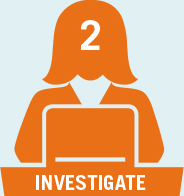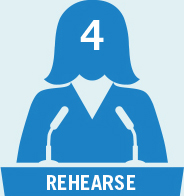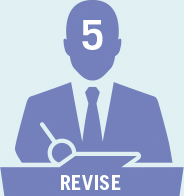13.2 Preparing Your Speech: Five Steps
 LearningCurve can help you review! Go to macmillanhighered.com/
LearningCurve can help you review! Go to macmillanhighered.com/
Think about the speeches you’ve heard during your lifetime. Some were probably very good, holding your interest and providing useful information. Some were probably not so good—
As Apple product presentations show, skilled speakers carefully prepare their messages to engage and inspire their audiences. To do the same, follow the five steps of speech preparation: think, investigate, compose, rehearse, and revise. (See Table 13.1.)

|

|

|

|

|
| Choose your topic, adapt to your audience | Plan your strategy, conduct your research, evaluate your sources | Develop your speech structure and supporting materials, prepare your visual aids | Create speaking notes, practice aloud, work on delivery | Process feedback from others and self- |
edel/Shutterstock
First, think about your audience and speech topic. Determine the purpose of your speech, choose the topic, and consider how to adapt it to your audience. When working through this step, it will be important to develop accurate perceptions, or knowledge, of your listeners so that you can deliver an understandable speech.
Second, investigate resources to use in developing your presentation. This includes planning your research strategy, conducting your research, and evaluating the resources you find.
321
Third, compose your presentation, outlining your ideas and planning any visual support. You will prepare an introduction to capture your audience’s attention, identify your main points, and decide how to conclude the speech. Successful public speakers incorporate the cooperative principle (from Chapter 5) into their language, making their message informative, honest, relevant, and clear. They also use “we” language to better connect to and build solidarity with their audience.
Fourth, rehearse your presentation. Apple presentations look easy because of the extensive time the executives and employees spend rehearsing. In this step, you practice your presentation on your own and in front of others, inviting feedback for improvements. This is also the time to work on your nonverbal skills—including eye contact, gestures, and facial expressions—
Fifth, revise your presentation, adapting it based on the feedback you received while rehearsing. You can further improve your speech content and delivery by being critically self-
In this chapter, we focus on the first two steps: thinking about your speech and investigating your sources. We discuss steps 3, 4, and 5 in Chapters 14–15.